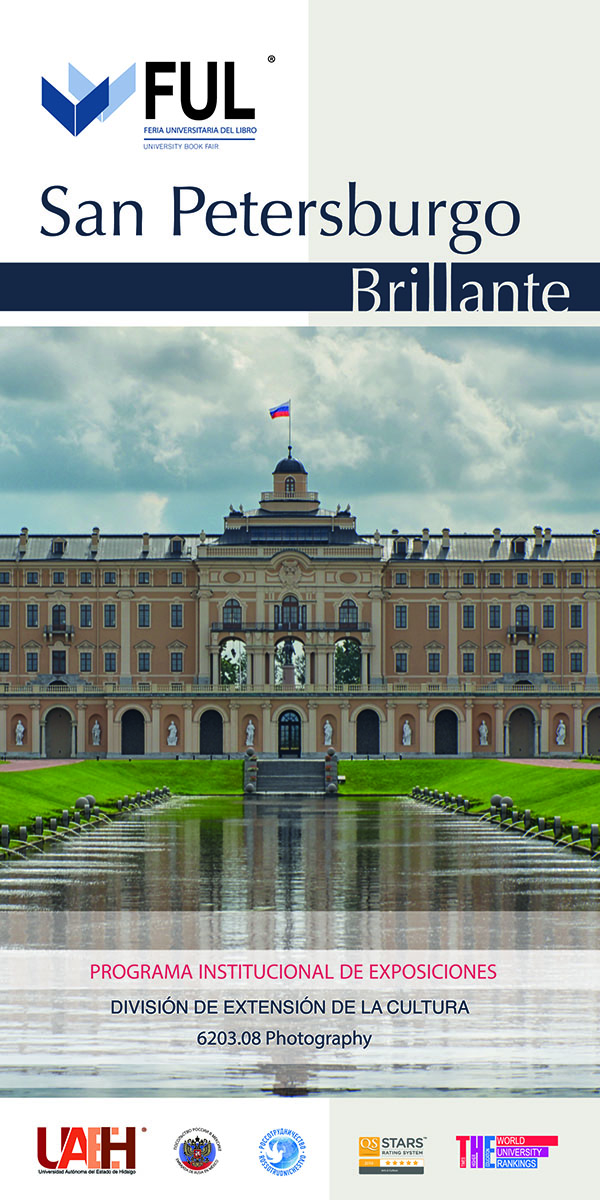St. Petersburg Bright
St. Petersburg, the glittering capital of the great Russian Empire, almost half a century ago went down in history under another name: Leningrad, the city of three revolutions. Recovering the old name of the city, its inhabitants have made an enormous effort to recover its former splendor. President Vladimir Putin, who was born there, lends it a special and undisguised love, as well as thousands of new Peterburgers who have accompanied him during the last few years in the halls of government in Moscow, have given a new impulse to the development of the city, its architecture and its history of which Russia and the whole world is proud.
For three hundred years St. Petersburg has belonged to the select circle of world capitals. Let us remember that it was built by Peter I as a special city, not only as the capital of the empire, but also with all the best and most appreciated things that had been discovered on earth in the XVIII century. For the construction of the city, for more than two centuries, the best architects were invited, the most modern technologies were used. Inhabitants from all over the world, of different nationalities, cultures and religious denominations were attracted to it. This led to the creation of a special character of the Petersburg citizen: calm, tolerant, slightly conservative, hard-working and indomitable.
Thanks to these character traits the city endured the 900-day blockade by the troops of fascist Germany unprecedented in world history. Its inhabitants died of cold, explosions and bombardments, but they did not surrender. "The Seventh Symphony" (Leningrad) by the brilliant Dmitri Shostakovich, composed by the author during the blockade, expresses better than anyone else and in its entirety the indomitable character of this city and its inhabitants. Masterpieces of world architecture, palaces of the emperor, the city outskirts, parks and pavilions were devastated, looted and burned by the aggressors. Thousands of magnificent buildings in the capital were destroyed by bombs. And again the indomitable character of the Petersburgers was able over 70 years to rebuild almost completely what was destroyed.
Today the city has begun a complete overhaul of repair and cleaning, more and more of its inhabitants are involved in this cycle of renewal. New offices, hotels, cafes, restaurants are being opened every day, and this is not done by foreign citizens passing through, nor by Muscovite businessmen, but by the five million inhabitants of the northern capital. St. Petersburg is an eternal symbol, first of the Russian Empire and later of Soviet conservatism. Amazingly, the life of the first pioneering citizens of St. Petersburg has been revived and the sea wind has once again inflated the red sails of this seafaring city. The city has a bustling and energetic fullness, its houses and palaces were dressed in the forest and as if by magic they are perfectly clean and combed. Through its canals and rivers sail all kinds of unimaginable boats, passenger ships, and yachts. Its docks are adorned with advertisements for transoceanic cruises and its famous bridges are beautifully illuminated. Its best theaters are packed with audiences. Its streets are festooned with colorful lace, cast iron tables, umbrellas and numerous cafes. The city's squares welcome hundreds of thousands of guests from all over the world to the many summer concerts of the world's most famous voices. In the stadiums you can hear the cheers and cheers of the fans. Hundreds of fountains whisper water once again.
The city of museums (there are more than a hundred), The museum city, The city of bridges, islands and canals (there are more than a hundred) has become much more comfortable and attractive for life and entertainment of any age, culture or nationality. You have to travel to St. Petersburg as much as to Venice, Paris, Rome, London or New York to be infected by the eternal energy of this great city.
Alexander Novikov. 2010-2019
Alexander Novikov
Alexander Novikov was born in Leningrad (in 1991, the historical name of St. Petersburg was returned to the city).
He graduated from St. Petersburg Electrotechnical University, worked for eight years as a researcher at the Academy of Sciences of the USSR.
Participated in the 32nd Soviet Antarctic Expedition (Wintering), circumnavigation on the scientific expedition ship Academician Fedorov. Visited more than 75 countries of the world.
Fond of photography since childhood. His favorite genres: landscape, reportage, genre photography, portrait, still life. Author of more than 40 solo exhibitions in 19 countries, and participant in hundreds of group exhibitions.
Filmed more than 60 documentaries. Full member of the Russian Geographical Society (Russian tn. RGO), vice-president of the Commission for the Study of Latin America, RGO, member of the Creative Union of Artists of Russia.


